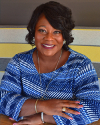
A Message from Ujima Donalson
Assistant Vice President,
Total Talent Management
As a leader, woman, and person of color, I am often asked to participate in diversity activities—diversity committees, diversity roundtables, diversity panels, and so forth. I appreciate the diversity and inclusion work being done at the University, and yet I do sometimes wonder if there are other not so obvious choices that should be included in this work. It seems the assumption is made that we don’t have adequate bench strength, so the same people get tapped to participate across groups.
The truth is we do have an increasingly diverse population here at the UW. We might just have to look past our initial perceptions and think more deeply or broadly about the possible intersectionalities and interests of people on our team. Also, we should recognize that—thanks in no small part to the Race and Equity Initiative and Diversity Blueprint—more people are advancing their awareness and cultural competency, rolling up their sleeves, and working to be part of the solution. That said, there are still many who are interested in improving diversity, equity, and inclusion but are held back by uncertainty, inexperience, or even fear about how to engage in this work. Read More
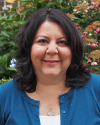
Diversity in Hiring: Best Practices for Better Outcomes
Norma Rodriguez, Director, Office for Faculty Advancement
When leaders hear about diversity in hiring, their minds may jump to questions about quotas, or they may feel resistance or apathy due to the myriad demands of the recruiting and hiring process. In actuality, affirmative action is not about quotas. Diversity in hiring is intended not only to break down barriers and create pathways for historically excluded and underrepresented groups but to ensure our teams and departments benefit from varied perspectives and heterogeneous experiences. Further, strong diversity hiring practices uphold the UW’s guiding value of diversity and commitment to inclusive excellence and also contribute to building a workforce that reflects the diversity of our student body.
To illustrate a few best practices that can transform your approach to hiring and help you maintain balance and consistency, I’d like to focus on two common hiring process challenges: (1) There’s very little diversity in our hiring pool and (2) We have a diverse pool but keep hiring the same kind of people.
Read More
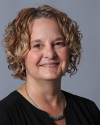
Embracing Diversity and Equity: Interview With Nicki McCraw
Assistant Vice President, UW Medicine Human Resources
Nicki McCraw was recently honored as an “Outstanding LGBTQ Voice” at the third annual Puget Sound Business Journal Business of Pride celebration, and she has been instrumental in garnering recognition from the Human Rights Campaign for UW Medicine’s leadership in LGBTQ healthcare equality. POD talked with her about ongoing diversity and inclusion work at UW Medicine.
How have things changed since you began your position as assistant vice president for UW Medicine Human Resources in 2007?
I think UW Medicine has fantastic values. What’s changed over the last several years is that we’ve made a really concerted effort to articulate and communicate that we’re an open, diverse, and accepting place.
Read more
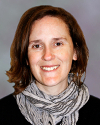
Getting Started With Diversity and Inclusion Work: A Case Study
Trina Burke, UW-HR Diversity Committee
This summer marks a momentous anniversary: The University of Washington’s 2017–2021 UW Diversity Blueprint was released one year ago with an overarching goal of making the UW a truly inclusive and equitable environment for learning, research, service, and outreach. As the University gears up for another academic year, there’s no better time for leaders to assess where their units are in terms of diversity and inclusion, where they’re going, and how they might get there. To that end, I’d like to share some of the work that UW-HR’s own Diversity Committee has been doing that may help inform your unit’s or department’s response to the Diversity Blueprint. Read more
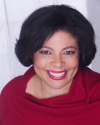
Q&A With Gayle Johnson
This autumn POD welcomes Gayle Johnson to our instructor roster. Gayle is facilitating the new class Creating an Inclusive Workplace Through Emotional Intelligence and responded to five questions about this offering and her approach.
What inspired you to develop this new course for POD?
I am passionate about helping organizations create effective and healthy work environments for all their employees and evolve to where diversity and inclusion isn’t a one-off activity but becomes part of the fabric of their organization. With this class, I believe I can help leaders raise their self-awareness and also become more successful with integrating diversity and inclusion into their organizational structure and systems. Read more
Planning Tools and Resources for Leaders
POD offers a wealth of free resources to help you plan everything from onboarding to staff development and organizational excellence. The Onboarding Toolkit for UW Managers was recently updated with an overview of what’s handled in Workday, by the new employee, by the supervisor or department, or through the Welcome Day employee orientation and benefits session. POD’s Guide to Workplace Competencies maps an array of competencies to POD classes, webinars, certificates, and consulting services as well as other University resources. Our Annual Class Schedule may also help with planning your or a staff member’s professional development. Finally, organizational leaders can access our succession planning webpage and toolkit for help with identifying and planning for future staffing needs.
|







